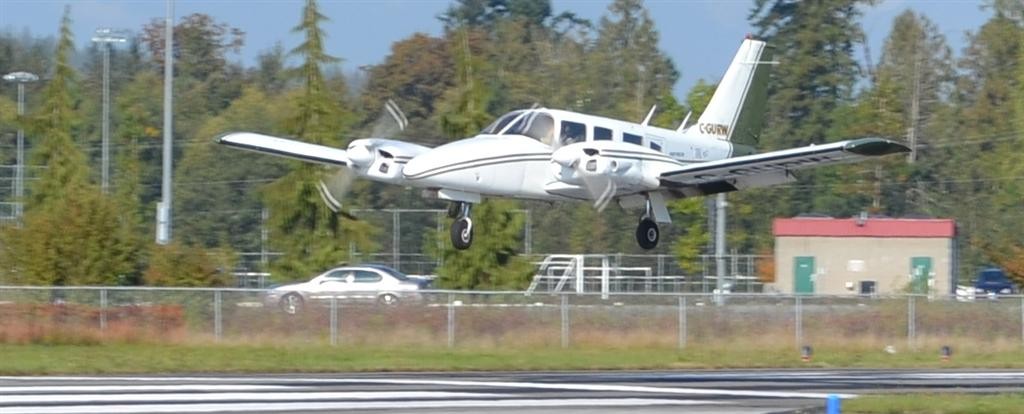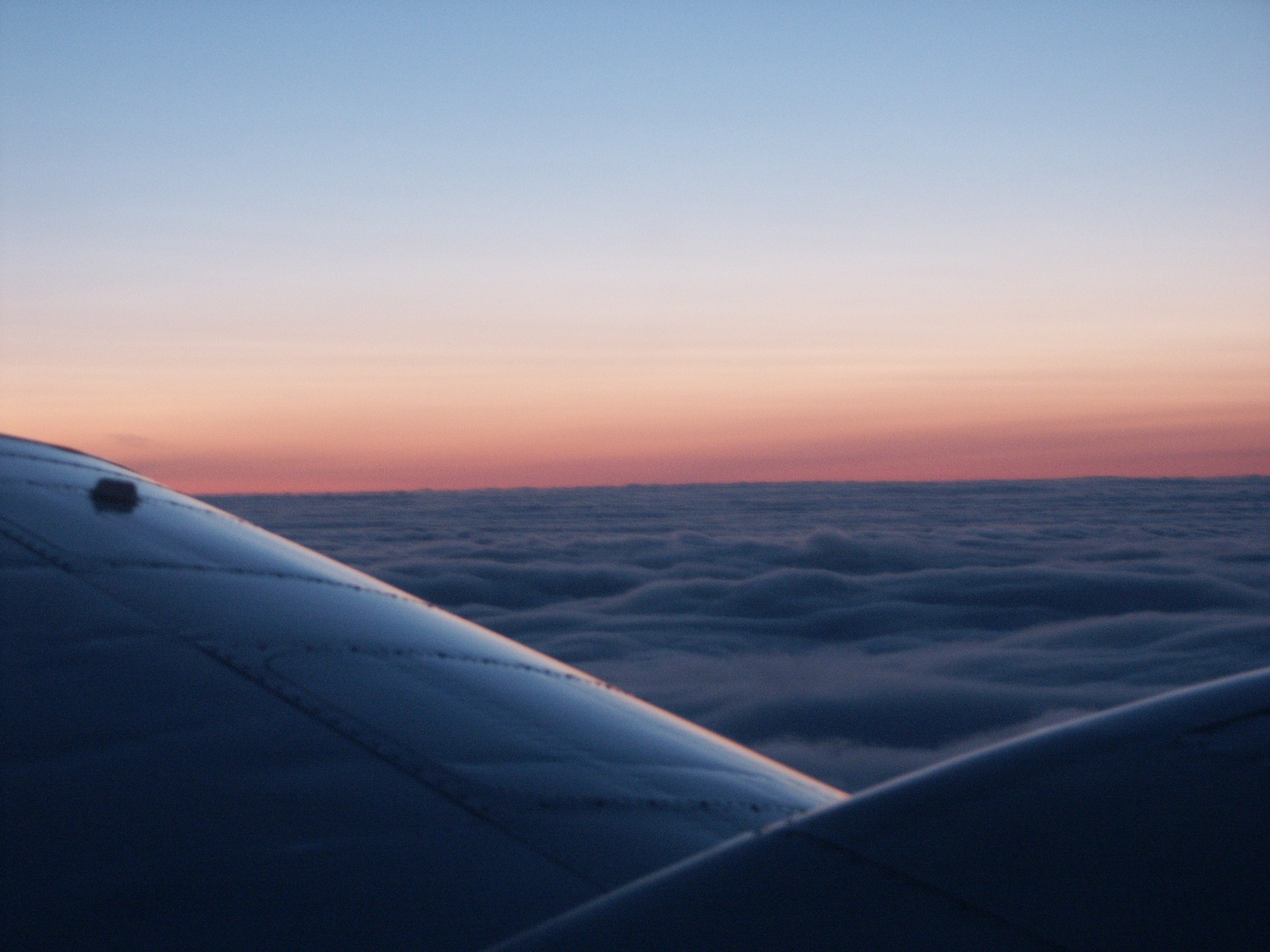Multi-engine Class Rating Program
.jpg)
Successful completion of the Multi-engine Rating Program leads to eligibility for a Multi-engine Class Rating and the issuance of a Certificate of Qualification—Multi-engine Class Rating by Langley Flying School, Inc. The holder of a Multi-engine Class Rating may exercise the privileges of Pilot-in-command of multi-engine aircraft. The Multi-engine Class Rating is recommended for Commercial Pilot students since passenger transport is conducted primarily in multi-engine aircraft. Multi-engine Class Rating is required for qualification for an Airline Transport Pilot Licence.
.jpg)
Prerequisites
In accordance with the requirements established by the Private Career Training Institutions Agency, entrance into this program requires the completion of Grade 12 (or equivalent) or candidates must qualify as a mature student (age 19 and not having attended school full-time for 52 weeks). Additonally, before commencing training in the Multi-engine Class Rating, a student requires:
- a valid Commercial Pilot Licence or Private Pilot Licence;
- a valid Category 1, or 3 Medical Certificate.
All students must be cautioned that the cost of training is contingent on meeting the flight test standards of Transport Canada, and because the skill and knowledge of students varies, so do the training costs. While variations in student performance are more prevalent at the Private Pilot level, Multi-engine students must also financially plan for this and are encouraged to retain an additonal $1,500 in reserve for financial planning purposes so as provide for varied rates of learning and varied levels of skill. Training costs can be substantially reduced in conjunction with regular flying and effective student self-study and preparation.
Prepayment of fees is not required. Students pay tuition and aircraft unitlizations at the conclusion of training flights, and pay groundschool tuition, if applicable, at the beginning of the session. All flight schools in British Columbia are required by law to charge the GST (5%). Visa, MasterCard, American Express, and Debit Cards are accepted.
Aircraft rates may be subject to change with minimal notice, depending on such things, for example, as fluctuating aviation fuel prices.
The minimum requirement established by Transport Canada is that the applicant for a Multi-engine Class Rating shall complete a flight test to the standard outlined in the Flight Test Standard, Multi-engine Class Rating.
Air Training Syllabus
In accordance with the training standards of Transport Canada and Langley Flying School, the following provides an outline of air training which makes up the Multi-engine Class Rating Program.
Standard Operating Procedures
At the outset of training, students are introduced to Standard Operating Procedures (SOPs). SOPs are cockpit co-ordination procedures required by Canadian Aviation Regulations in multi-crew commercial flight operations, whether they be Air Taxi, Commuter, or Airline. SOPs consist primarily of memorized pilot procedures and verbal calls that are used repetitively at various phases of flight, and serve to maximize pilot awareness in the cockpit. The SOPs applied in this Program are published in Langley Flying School’s Multi-engine Flight Training Handbook; they are based on single-pilot commercial operations and closely correspond to the standards currently applied in commercial aviation. SOPs are applied during all training flights.
Speed variation control
One of the most challenging features of converting to a multi-engine aircraft is the tremendous speed variations with which the pilot must now contend. This exercise focuses on pilot control throughout the aircraft speed profile, including pilot compensation for the increased drag associated with flap extension and retraction, and gear extension and retraction.
Takeoffs and landings
Students are introduced in this exercise to the greater precision and control associated with multi-engine landings and takeoffs. With respect to takeoffs, student learn how to present a proper cockpit takeoff briefing, including the actions to be taken by the crew in the event of an engine failure below V1, and the quite different actions to be taken if the engine failure occurs above V1. Students also learn how to fly a prescribed departure profile containing published V2 and V3 speeds. Included in this exercise is the higher performance Vx obstacle climb where aircraft climb performance reaches 2000’ per minute.
Steep turns
Owing to the higher speeds at which steep turns are performed in a multi-engine aircraft, students are introduced in this exercise to the greater precision—especially with respect to pitch control—that is required to perform steep turns. A higher speed aircraft is more susceptible to undesired altitude and speed changes in a steep turn that can result if the aircraft pitch is not managed effectively and accurately. Smooth yet aggressive control inputs are emphasized here.
Vmc demonstration
This exercise introduces student to the aerodynamic symptoms of a Vmc occurrence. At a sufficiently safe altitude, one of the engines is brought to idle and the other engine is set to develop maximum power—simulating the conditions of flight most conducive to a Vmc occurrence. By gradually reducing airspeed in this configuration, students experience first hand the control difficulties as Vmc is approached, as well as the corrective actions taken by the pilot and the effect these actions have on the aerodynamic behaviour of a multi-engine aircraft.
Stalls
Stalls are a flight test item and students are required to demonstrate stalls both in a clean configuration—i.e., gear and flaps retracted—and in a landing configuration—gear and flaps extended. Special consideration with respect to multi-engine stalls revolve around the pilot ensuring protection from what may be regarded as a “Vmc. occurrence”—if full power is inadvertently applied when the aircraft speed is below Vmc, a multi-engine aircraft can enter spin autorotation as a consequence of “asymmetric thrust” generated by the powered engine. Students in this exercise learn stall recovery techniques that eliminate the possibility of a Vmc occurrence, yet minimise any loss of altitude.
Engine Failure—Cruise Flight
This is the first exercise in which students learn to manage engine failures during multi-engine operations. In response to a cruise engine failure students learn to maintain safe and proper control of the aircraft and the procedures undertaken to remedy the cause of the failure. This exercise is first conducted in the Flight Simulator, and then in the aircraft.
Engine Failure—Takeoff Roll
In this exercise students learn the possible consequences of an engine failure that occurs during the takeoff roll prior to V1 being reached. During the takeoff roll the pilot of a multi-engine aircraft must always be ready to react immediately to the sudden engine failure—if action is not taken immediately, the extreme yaw that is generated by the non-failed engine (if still set at maximum power) will cause such a sudden change in the aircraft’s direction that the aircraft could veer uncontrollably off the runway. Students learn the various SOP-prescribed checks during the takeoff roll that will minimise the risk of a pre-V1 engine failure, as well as learn the corrective action necessary to maintain directional control should an engine failure occur at this critical phase. This exercise is first conducted in the Flight Simulator, and then in the aircraft.
Engine Failure—Overshoot
In this exercise students learn to manage an engine failure during an overshoot procedure, with the aircraft in an approach configuration—gear extended, flaps 40°, and airspeed 90 MPH IAS. The first priority once an engine fails is of course to keep the aircraft under control, but the target in the exercise focuses on producing a positive single-engine climb as quickly and as safely as possible. Most multi-engine aircraft—certainly the Seneca—will climb satisfactorily on one engine (given altitude, pressure, and temperature limitations), but to perform as published in the Pilot Operating Handbook, they must be “cleaned up” with the gear retracted, the flaps retracted, and the propeller of the failed engine feathered. A common error is for the pilot to “climb away” prematurely, placing the aircraft in risk of a Vmc occurrence resulting from too low airspeed. Timing with respect to vital actions and precision pitch and yaw control in this exercise is pivotal. This exercise is first conducted in the Flight Simulator, and then in the aircraft.
Engine Failure—Single-engine landing
This exercise focuses on the special considerations that govern an approach and landing following an engine failure and shutdown. With single-engine landings the main consideration that governs the actions of the pilot is two-fold. Firstly, the pilot must ensure that, especially on the final phases of an approach, the power control inputs on the functioning engine do not become erratic with respect to managing the vertical placement of the aircraft along the glideslope—the need to apply power near the bottom of the approach in response to excess “sinking” would of course suddenly increase the risk of a Vmc occurrence. Secondly, the pilot must ensure that the approach is conducted so as to avoid the need to conduct an overshoot—again owing to the increased risk of approaching Vmc. The solution, of course, is effective planning in advance of a single-engine landing and this is what is emphasised in this exercise. This exercise is first conducted in the Flight Simulator, and then in the aircraft.
Seneca GURW over Washington
Flight Training Examinations
To ensure both quality and safety of flight training operations Langley Flying School includes in its training program a series of examinations that are designed to ensure essential knowledge is learned by all students. All of the examinations are multiple choice.
Required Texts
|
David Parry, 2015 |
Langley Flying School Mult-engine Flight Training Handbook Langley: Langley Flying School, Inc. |
| David Parry, 2015 |
Piper Seneca Standard Operating Procedures Manual Langley: Langley Flying School, Inc. |
|
Aspen Avionics |
Evolution Flight Display EFD1000 PFD PIlot's Guide |
| Piper Aircraft Corporation |
Piper Seneca Pilot Operating Handbook |
.jpg)




